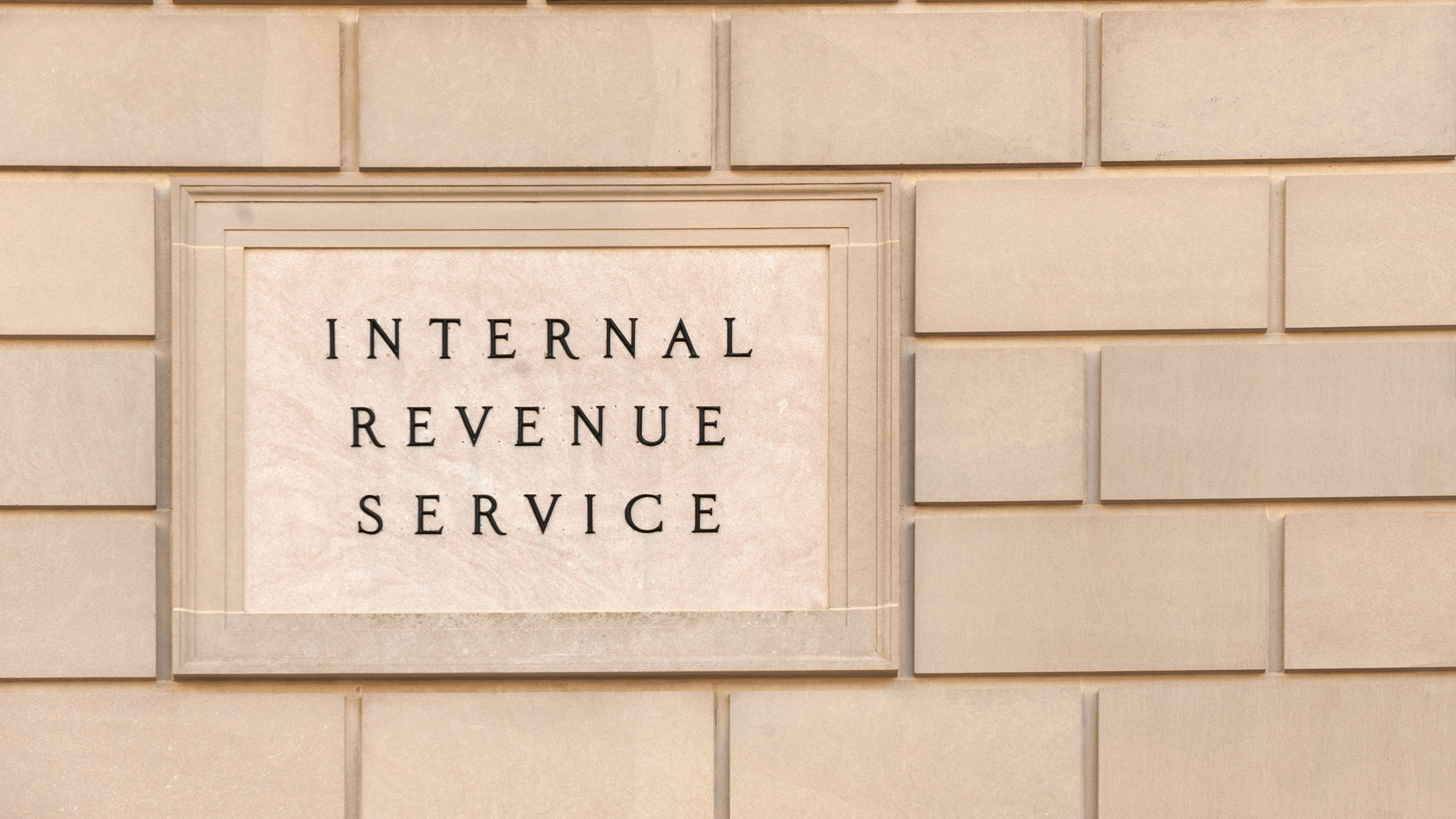Social Security Tax Limit for 2025: What the Higher Cap Means for Your Paycheck
Wealthier taxpayers will have more Social Security tax taken from their paychecks this year due to a wage base increase. How much more?


The Social Security tax, withheld from each paycheck, stops once your income reaches a certain amount. That is due to the Social Security tax limit or "wage base," which is the maximum amount of earnings subject to Social Security tax.
These taxes fund the Social Security program, which provides retirement, disability, and survivor benefits to eligible recipients.
Last fall, along with a 2.5% cost-of-living (COLA) increase, the Social Security Administration (SSA) announced a 4.4% increase in the tax limit for 2025, leading to higher taxes for some wealthy taxpayers this year.
From just $107.88 $24.99 for Kiplinger Personal Finance
Become a smarter, better informed investor. Subscribe from just $107.88 $24.99, plus get up to 4 Special Issues

Sign up for Kiplinger’s Free Newsletters
Profit and prosper with the best of expert advice on investing, taxes, retirement, personal finance and more - straight to your e-mail.
Profit and prosper with the best of expert advice - straight to your e-mail.
The agency also just announced a 2.8% COLA for 2026.
2025 Social Security tax limit increase
For 2025, the Social Security tax limit is $176,100. (Last year, the tax limit was $168,600.) So, if you earned more than $168,600 this past year, you didn’t have to pay the Social Security payroll tax on the amount that exceeds that limit.)
That can result in considerable tax savings for those who earn more than the wage base.
Let’s calculate the savings for someone whose salary exceeds the limit by $10,000 for 2025.
Salary: $176,100 + $10,000 = $186,100
Without the wage base limit, the tax would be about $11,538 (186,100 x 6.2%).
With the wage base limit, the tax would be about $10,918. (Tax on wage base: $176,100 x 6.2% = $10,918.20).
Savings calculation:
Savings = $11,538.20 (tax without limit) - $10,918.20 (tax with limit) = $620
So, an employee whose salary exceeds the Social Security tax limit by $10,000 would save $620 in Social Security taxes this year.
On the other hand, someone who earns wages exceeding the base by $30,000 would receive a $1,860 tax break. (The more you make over the tax limit, the more your Social Security tax savings.)
Note: This savings applies only to the Social Security portion of FICA taxes. The employee would still pay the 1.45% Medicare tax on their entire salary, as there is no wage base limit for Medicare taxes.
Also, for high-income earners, there's an additional Medicare tax of 0.9% on earnings above $200,000 for single filers or $250,000 for married couples filing jointly.
However, the Social Security tax limit increases yearly as the national average wage index increases. When that happens, almost every year, more income is subject to the Social Security tax.
How Social Security taxes are calculated and what the rates are
The tax rate for an employee's portion of the Social Security tax is 6.2%.
- Your employer also pays 6.2% on any taxable wages.
- Self-employed individuals pay the full 12.4%. However, it’s worth noting if you're self-employed, you can deduct the employer-equivalent portion of that amount.
Over the past five years or so, the Social Security tax limit has increased by an average of about $3,960 a year.
However, for 2025, the tax limit went from $168,600 to $176,100, an increase of $7,500 from the previous year. That is significantly less than the $13,200 increase from 2022 to 2023 — the largest recorded increase.
As a result, the maximum Social Security tax jumped from about $10,918 to $10,453.
So, people making over $176,100 in 2025 will pay about $465 more in Social Security taxes this year than they would have paid if the tax limit remained at $168,600.
COLA increase for Social Security
Along with the wage tax base rate, the SSA announced the 2025 Social Security COLA increase. As Kiplinger reported, more than 66 million retirees receiving Social Security checks will see their monthly government payments rise 2.5% this year.
On average, according to the SSA, Social Security retirement monthly benefits for about 68 million people are expected to grow by more than $50 beginning January 2025. When benefits grow, wealthier taxpayers might pay more tax. That's why a COLA rate increase is just one way you could get a surprise tax bill on your Social Security benefits.
Who is exempt from Social Security tax?
Some people don’t have to pay Social Security taxes. (Exemptions from Social Security taxes may be available if certain requirements are met.) Some examples are listed below, although other exemptions may be available.
- Certain members of religious groups or organizations
- Students and certain young (minor) workers
- Employees of foreign governments
- People the IRS considers to be “Non-resident aliens”
Looking ahead: The Social Security wage base for 2026
Each year, the Board of Trustees for the Social Security Trust Fund publishes a report on the financial status of the Social Security program. The latest report provides tax limit projections through 2033.
Interestingly, the board initially projected that the 2025 tax limit would rise to $174,900. However, as Kiplinger reported, the official announcement of the 2025 limit put the number at $176,100.
The projected tax limit for 2026 was $181,800. The agency just announced that the SS tax limit for 2026 is actually $184,500.
For more information, see: Social Security Tax Limit Rises Again for 2026: Who Pays More?
Related
Profit and prosper with the best of Kiplinger's advice on investing, taxes, retirement, personal finance and much more. Delivered daily. Enter your email in the box and click Sign Me Up.

Kelley R. Taylor is the senior tax editor at Kiplinger.com, where she breaks down federal and state tax rules and news to help readers navigate their finances with confidence. A corporate attorney and business journalist with more than 20 years of experience, Kelley has covered issues ranging from partnerships, carried interest, compensation and benefits, and tax‑exempt organizations to RMDs, capital gains taxes, and income tax brackets. Her award‑winning work has been featured in numerous national and specialty publications.
-
 Premium Rewards Cards: More Perks, Higher Fees
Premium Rewards Cards: More Perks, Higher FeesSome issuers are hiking the annual fee on their flagship luxury credit cards by hundreds of dollars. Are they still worth using?
-
 3 Trips to Escape the Winter Doldrums, Including An Epic Cruise
3 Trips to Escape the Winter Doldrums, Including An Epic CruiseThree winter vacation ideas to suit different types of travelers.
-
 The Retirement Income Trinity: Cash Flow, Longevity and Tax
The Retirement Income Trinity: Cash Flow, Longevity and TaxRetirement income planning is essential for your peace of mind — it can help you maintain your lifestyle and ease your worries that you'll run out of money.
-
 'The 'Mamdani Effect' in New York: Can the City Afford a Millionaire Tax?
'The 'Mamdani Effect' in New York: Can the City Afford a Millionaire Tax?State Tax Will higher income taxes drive the wealthy to flee New York in 2026?
-
 Law Reversal Looming? Trump Eyes 2026 Gambling Winnings Tax Change
Law Reversal Looming? Trump Eyes 2026 Gambling Winnings Tax ChangeTax Deductions It's no secret that the IRS is coming after your gambling winnings in 2026. But how long will that last?
-
 Trump's Plan to Eliminate Income Tax: 7 Things to Know Now
Trump's Plan to Eliminate Income Tax: 7 Things to Know NowTax Policy The potential consequences of eliminating taxes in favor of Trump tariffs could impact everything from inflation to Social Security and might give some U.S. taxpayers pause.
-
 The 'Scrooge' Strategy: How to Turn Your Old Junk Into a Tax Deduction
The 'Scrooge' Strategy: How to Turn Your Old Junk Into a Tax DeductionTax Deductions We break down the IRS rules for non-cash charitable contributions. Plus, here's a handy checklist before you donate to charity this year.
-
 IRS Says You Made a Tax Return Mistake? A New Law Could Help You Fight Back
IRS Says You Made a Tax Return Mistake? A New Law Could Help You Fight BackTax Law Updated taxpayer protections change what the IRS must explain on error notices and how long you have to respond.
-
 Tax Refund Alert: House GOP Predicts 'Average' $1,000 Payouts in 2026
Tax Refund Alert: House GOP Predicts 'Average' $1,000 Payouts in 2026Tax Refunds Here's how the IRS tax refund outlook for 2026 is changing and what steps you can take now to prepare.
-
 Are You Middle-Class? Here's the Most Tax-Friendly State for Your Family
Are You Middle-Class? Here's the Most Tax-Friendly State for Your FamilyTax Tips We found the state with no income tax, low property tax bills and exemptions on groceries and medicine.
-
 Social Security Benefits Quiz : Do You Know the IRS Tax Rules?
Social Security Benefits Quiz : Do You Know the IRS Tax Rules?Quiz Social Security benefits often come with confusing IRS tax rules that can trip up financially savvy retirees and near-retirees.